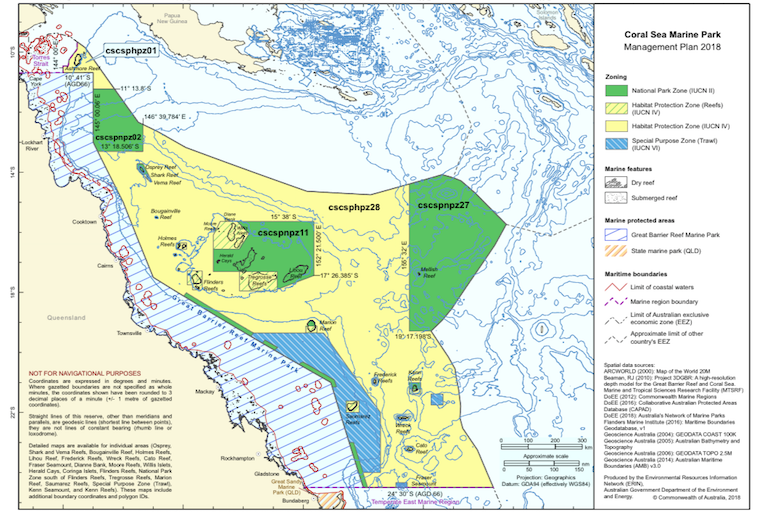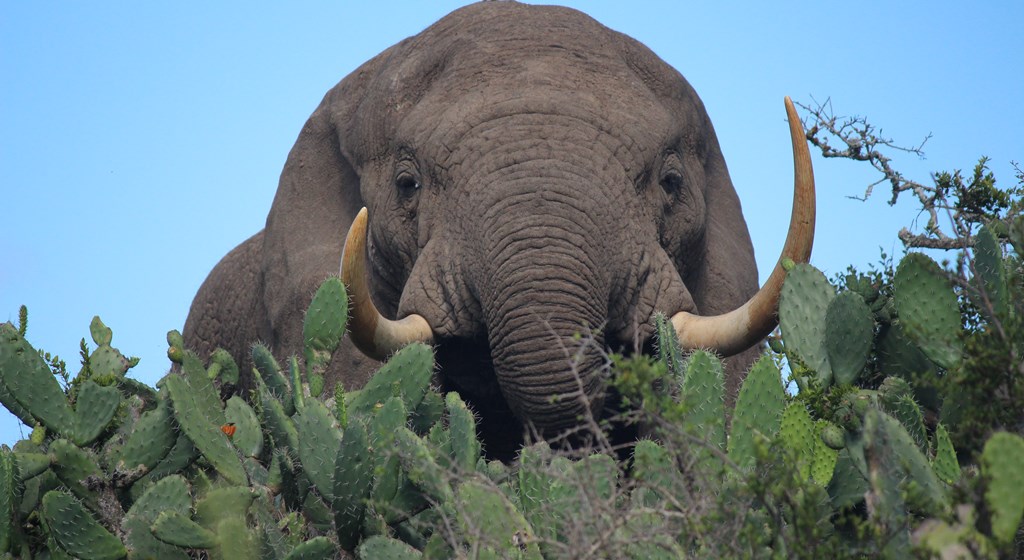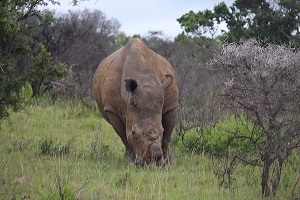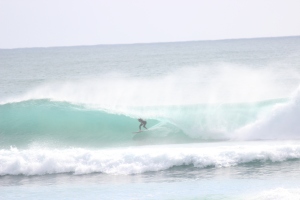By now you’ve probably seen this camera trap video of a Javan rhino wallowing – it’s gone viral! But we thought we’d give you a little more behind the video… Like all rhino species, Javan rhinos (Rhinoceros sondaicus) roll in the mud, or wallow, to cool off and the mud helps protect their skin from insects […]
via Rare Javan Rhino Caught on Camera — The International Rhino Foundation Blog
When you were a child, you probably enjoyed pizza or ice cream parties for your birthday. For a rhino, like Andatu, he prefers plants and fruits as his treat. Today is his special day, and the keepers at the Sumatran Rhino Sanctuary (SRS) in Way Kambas National Park in Sumatra, Indonesia have his favorites ready […]
via Andatu is Turning 8 and He’s Hungry! — The International Rhino Foundation Blog
This video provides mainly objective information about corona about signs, keeping it in perspective, prevention and treatment. It provides info on travel and challenges and situations in different countries.
Comments in the video also concern the Illegal Wildlife Trade with pangolins being implicated. “If we stop trapping wild animals and eating them we may prevent the outbreak of a lot of these RNA viruses”
On February 16th 2020 14 wildlife organizations in Vietnam wrote an open letter to Vietnam’s Prime Minister, Nguyen Xuan Phuc, urging for immediate and serious improvements to wildlife conservation laws. As the Coronavirus continues to spread worldwide and within Vietnam’s borders, it is imperative that Vietnam’s government take action to end the trade and consumption of wildlife. The recent outbreak has already had devastating effects on health and the economy in Vietnam.
Follow these links for information on Noel, Nura Gunyu and the related Gofundme donations page:
https://www.australiangeographic.com.au/australian-geographic-presents/noel-butler/
https://www.gofundme.com/f/relief-and-rebuild-jamanee-gunya
https://www.facebook.com/nuragunyu/
* from www.nuragunyu.com.au
 “Today brought the end of proceedings to a three year battle and overwhelmingly successful prosecution campaign. A wave of applause echoed through a packed out Grahamstown Crown Court, as Jabulani Ndlovu, Forget Ndlovu and Sikhumbuza Ndlovu were sentenced to 25 years imprisonment for multiple counts of rhino poaching”, BenWallace Photography posted on his Facebook page.
“Today brought the end of proceedings to a three year battle and overwhelmingly successful prosecution campaign. A wave of applause echoed through a packed out Grahamstown Crown Court, as Jabulani Ndlovu, Forget Ndlovu and Sikhumbuza Ndlovu were sentenced to 25 years imprisonment for multiple counts of rhino poaching”, BenWallace Photography posted on his Facebook page.
The notorious ‘Ndlovu Gang’ were arrested of 10.27kg of fresh rhino horn, veterinary drugs (M99), a dart gun, an illegal rifle and ammunition, saws and knives by a police operation referred to as ‘operation full moon’ – a campaign set up to combat poaching in the Eastern Cape. The syndicate, notorious for posing as guests at lodges, are the only poachers in recent years to have been found to use veterinary drugs in South Africa.
Over the course of trial, totalling to almost three years in duration, the prosecution found overwhelming circumstantial evidence against the accused. The evidence, including records from over 70 sim cards, multiple cell phones and a series of rented vehicles, pinpointed the group to at least 10 rhino poaching cases at specific times over the course of three years.
Grahamstown High Court, was packed full of conservationists, anti-poachers, vets and members of the public, most of whom were affected directly or indirectly by this poaching group.
Wildlife Vet Dr William Fowlds, who conducted the majority of the post mortems on the poached rhino’s, described today’s result as ‘ an amazing moment for this rhino community and people across the country’.
With 9 years since Dr Fowlds’ first post mortem of a rhino poached using veterinary drugs, it has been a long an agonising wait to see justice taken against rhino poachers in the Eastern Cape.
‘We can finally say that a poacher, has been convicted and sentenced to 25 years.. We expect that momentum with gather based on the energy, the enthusiasm and most importantly the judicial precedent that has happened here today’.
Prosecution Lawyer Bucks Coetzee has described the magnitude of the case as in need of ‘special mention’.
‘This can now be used in all prosecutions of a similar nature’
Several other high profile rhino poaching cases have been delayed awaiting the result, it is believed that this case will set a precedent for similar accounts in the future, and to act as a deterrent for rhino poachers, particularly in the Eastern Cape.
‘The sentence that was imposed today was a very strong message that can be sent to likeminded poachers.. rhino poachers will face very severe penalties, and hopefully that will protect our rhinos’
The magnitude of today’s result is clear to be seen, the tide of justice for rhino poachers in South Africa has taken a significant turn. The Ndlovu Gang are still linked to over 50 other rhino poaching incidents in other provinces throughout South Africa, with pending trials. With four other ongoing rhino poaching in the Eastern Cape, cases the justice system set a clear message; that rhino poaching will not be tolerated.
When the gang was convicted, Eastern Cape MEC for Finance, Economic Development, Environment Affairs and Tourism, Oscar Lubabalo Mabuyane, on Friday welcomed the conviction of rhino poachers by the Eastern Cape High Court sitting at Grahamstown.
“The steps taken by the government together with our social partners led to the conviction of these thugs who are trying to destroy the province’s wild life.
“I strongly believe that the conviction of the poachers sends a strong message to other wannabe poachers that they must not even consider poaching our animals because they will be jailed,” Mabuyane said.
Three members of the notorious Ndlovu Gang were found guilty of dozens of charges relating to the poaching of 13 rhinos in the Eastern Cape over some five years.

Jabulani Ndlovu, 40, Forget Ndlovu, 37, and Sikhumbuzo Ndlovu, 38 had sat poker faced as Judge Jeremy Pickering pronounced each of them guilty of over 50 charges related to the poaching of the 13 rhinos.
The men are not related.
Forget had escaped conviction on charges relating to just one of the poaching incidents.
Eastern Cape MEC for Finance, Economic Development, Environment Affairs and Tourism, Oscar Lubabalo Mabuyane appealed to local communities residing in villages next to wildlife parks not to accommodate strangers in their homes because some of the poachers use rural villages neighboring parks as a base for planning their poaching activities.
“The provincial government has upped the ante in fighting Rhino poaching by using technology like chips and fencing to protect wild life from poaching thugs.”
Mabuyane said that the Eastern Cape government is investing R15 million to improve the security at the parks under the ownership of the provincial government.
“The people of the Eastern Cape are united behind anti rhino poaching program and this unity will make it difficult for anyone to poach rhinos in the province,” he added.
“With a united voice, young and old, black and white, private, public sector, police and the justice system, we are saying we will never allow poaching in our province.
He had called for strong sentences “to send a strong deterring message to any person or group that might be planning to poach wild life anywhere in the South Africa.”
Planet Rhino Facebook page posted a photo of rangers and people from the rhino conservation sector at conviction saying, “The accused have been taken down to the cells. An amazing outcome, huge respect and thanks to all those who have worked so hard to make this possible. And thank you to everyone who attended court and represented our rhinos.

A public gallery packed with dozens of environmentalists, game farm owners, and khaki-clad game rangers and members of private anti-poaching units were relieved and happy with the convictions

Signs outside the court showed that the community wanted an appropriate sentence for the poachers
Stories and photos from media and Planet Rhino FB
South African ranchers who raise rhinos are supporting a virtual currency, backed by stockpiles of valuable rhino horn, to fund protection of the threatened animals. But their hopes rest on the long-shot gamble that the global ban on the horn trade will be lifted. Read the article
By Michael Smith
The Australian government argues that the extent of illegal ivory trade in Australia doesn’t warrant strict reporting requirements, but auditors argue that Australia is not well positioned to know how much illegal trading is occurring.
The Convention for International Trade in Endangered Species (CITES), which works by establishing international agreement to control import and export of wild animals, has import and export data, but it creates a lot of ambiguity for the analyst.
According to the Convention for International Trade in Endangered Species, between 2010 and 2016 inclusive, Britain issued 54 records for the export of elephant ivory from the UK to Australia, comprising 2388 units mostly carvings.
For the same period the total “importer reported quantity” in Australia was three units. A unit could be small or large as there are no descriptors in the data.
The Environment and Energy Department spokesperson said in most of the cases import permits weren’t needed and the remaining 55 cases would have been seized.
“Most of the reported ivory items (2,333 of the total 2,388 exported items) are recorded as ‘pre-Convention’ specimens—meaning the specimens were obtained before elephants were protected under CITES. Australia was not required to issue any CITES documentation for these items and hence there are no records of the imports in the CITES database,” the department spokesperson said in March.
CITES and UNODC have rung warning bells on areas where domestic regulations fall short.
According to the CITES Conf. 10.10 (Rev. CoP17) Trade in Elephant Specimens:
“FURTHER URGES those Parties in whose jurisdiction there is an ivory carving industry, a legal
domestic trade in ivory, an unregulated market for or illegal trade in ivory, or where ivory stockpiles
exist, and Parties designated as ivory importing countries, to ensure that they have put in place
comprehensive internal legislative, regulatory, enforcement and other measures to:
a) regulate the domestic trade in raw and worked ivory;
b) register or license all importers, exporters, manufacturers, wholesalers and retailers dealing
in raw or worked ivory;
c) introduce recording and inspection procedures to enable the Management Authority and other
appropriate government agencies to monitor the movement of ivory within the State,
particularly by means of:
i) compulsory trade controls over raw ivory; and
ii) comprehensive and demonstrably effective stock inventory, reporting, and enforcement
systems for worked ivory;
https://www.cites.org/sites/default/files/document/E-Res-10-10-R17.pdf
The United Nations Office on Drugs and Crime (UNDOC) 2016 World Wildlife Crime Report called for the introduction of national legislation to regulate the possession, use and sale of the most threatened wildlife products from other parts of the world. It offered potential solutions, including providing customs agents with the right tools to conduct international wildlife crime enforcement.
https://conservationaction.co.za/media-articles/australia-new-zealand-letting-elephant-rhino/
For the Love of Wildlife (FLOW) founder and director, Donalea Patman, who organised Australia’s first ivory crush in Melbourne in March, says the regulations in Australia are too loose.
“What we have also found is that the reporting and the way the permits are issued and recorded, it’s not fit for purpose,” Patman says.
Patman and Federal MP Jason Wood were in meetings with the then Environment Minister Josh Frydenberg earlier this year regarding bills to ban all ivory and rhino horn imports and all domestic trade, but the Environment Department didn’t seem keen.
“The response from the Environment Department is there is not enough to worry about. We are not included in the poaching crisis,” Patman says.
Jason Woods agreed that the department didn’t want to budge.
Frontline and biosecurity
With Australia halfway between the supply in Africa and the market in Asia, perhaps Australia should be very concerned. The syndicates are believed to be quite organised, Asian-run, Africa-based and according to USAID the frequency and sophistication of worldwide large-scale (half tonne to seven tonne) ivory seizures have increased since 2000 and almost tripled since 2009.
https://www.usaid.gov/sites/default/files/documents/1865/W-TRAPS-Elephant-Rhino-report.pdf
A reliable source with knowledge of customs at shipping ports says Australian ports are porous to shipping containers containing illegal items coming in from Asia.
The source says mixed load containers, shelf companies and transposed first and last Asian names on container documentation are problematic for customs.
The Australian Border Force is the co-regulator of CITES. But at the frontline on Australian borders they hand over responsibility for illegal wildlife products to the Department of Agriculture and Water Resources because it is a biosecurity issue.
“Australia has a strong, established biosecurity system that includes robust measures to manage risks associated with imported cargo, mail and international passengers,” the Department of Agriculture and Water Resources spokesperson emailed in response to my questions about shelf companies and mixed loads.
The spokesperson for the Environment Department emailed that there is “no evidence” to suggest Australia is a major market because criminal groups target countries with poor governance.
“Australia’s border protection measures and strong wildlife trade laws mean that illicit ivory transhipments through Australia are a high-risk proposition [for illegal syndicates].”
An expert in the ivory trade in New Zealand and Australia, Fiona Gordon, says the Australian seizure figures are just an indication of a much larger amount of rhino horn and ivory coming in through Australia’s borders illegally.
Only two seizures in Perth and Sydney have been reported publicly, but it has been revealed that in the period 2010-2016 there were a total of 25 seizures suspected to contain rhinoceros and 411 seizures suspected to contain elephant that have not been reported publicly.
The Environment and Energy Department spokesperson emailed that most cases of noncompliance were “small scale and largely inadvertent breaches”.
Gordon says while the imports and exports are recorded in CITES database, traditionally there has been no reporting of seizures in that database until October last year and they are still not public.
The departmental spokesperson emailed there were no seizures of rhino horn and 13 seizures of suspected elephant ivory in 2017.
In 2015 The Australian National Audit Office did an audit of the Department of the Environment and the Department of Immigration and Border Protection of the Wildlife Trade Provisions. The audit revealed the effectiveness of the environments department’s regulations has been undermined and the department is not positioned to know the extent of ivory trade:
“The effectiveness of the Department of the Environment’s regulation of wildlife trade under Part 13A of the EPBC Act has been undermined by the absence of appropriate and tailored policy and procedural guidance, functional IT support systems and a risk-based approach to monitoring compliance. While the department considers the risks arising from this area of regulatory activity to be low compared to its other regulatory responsibilities, with settings and resources allocated accordingly, this position has not been informed by structured departmental-wide risk assessment focusing on its regulatory activities. As such, the department has limited assurance as to the adequacy of current settings. Further, the absence of an appropriate set of performance measures and reporting arrangements means that the department is not well positioned to report both internally and externally on the extent to which it is achieving its regulatory objectives.”
In response to the ANAO audit a spokesperson for the Environment and Energy Department emailed in March that they were working on it.
The spokesperson said they are developing a new database, updating their compliance plans, evaluating publicly available information, identifying minimum quantity data standards and improving their reporting of instances of regulating wildlife trading and seizures, the spokesperson emailed.
The audit found “overall, the ACBPS had in place appropriate arrangements to undertake its responsibilities under the co-regulatory model, there is scope for improvements in the quality of regulatory data, the sharing of information and intelligence with Environment, and the greater coordination of compliance and investigation activities.”
The remedying that the Enviro Dept is doing is a part of a five year plan according to ANAO but Johnson says elephants and rhino can’t wait five years.
“The important thing is for the public to make good decisions, they need information and it is very difficult to get information and interpret it very well. With CITES they need to engage on this to help the public understand what the situation is exactly,” Gordon says.

























































